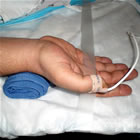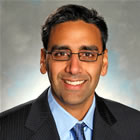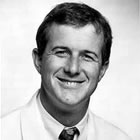|
Wrist Angioplasty Summit
in Boston Sponsored by The Society for Cardiovascular Angiography
and Interventions (SCAI)
Distinguished Faculty of
Transradial Interventional Cardiologists Assembles for Day-Long Teaching
Session
|
 |

The
radial artery in the wrist can be used for angiography,
angioplasty and stenting |
|
November
4, 2010 -- Boston -- How do interventional cardiologists
learn a new technique for placing stents once they're out
of their fellowships and settled into a practice? If that
technique is using the radial artery in the wrist to reach
the coronary
arteries surrounding the heart, then a good way to start
would be to attend tomorrow's "SCAI
Radial Summit" in Boston. But you would
have had to sign up weeks ago, because the course is filled
up.
Acknowledging the enthusiastic response, The Society for
Cardiovascular Angiography and Interventions (SCAI) has scheduled
a second course, the SCAI
Transradial Intervention Program
(TRIP) to be held on January 15, 2011 in Philadelphia.
|
Popular
in Europe and Asia, the transradial (or wrist) approach to percutaneous
catheter-based diagnostic and interventional procedures is just
starting out in the U.S. Various hospital centers and cardiologists
who have learned the transradial technique have been offering courses
to other physicians
and cath
lab personnel on a limited basis for the past several years, but
recently SCAI has become involved in promoting
training. The organization hosted two major symposia on the radial
approach at its Annual Scientific Sessions held in San
Diego this past March, and is now offering what may become a series
of meetings around the country.
According to course co-director,
Dr. Pinak Shah, Assistant Professor of Medicine at Harvard
Medical
School
and Director of the Interventional Cardiology Training program at Brigham & Women's
Hospital in Boston, tomorrow's course is the first time a national professional
society has sponsored such a gathering:
"The national meetings
often have a radial symposium and they're generally pretty
short.
The last one at ACC lasted for maybe an hour-and-a-half.
But the room was packed. So
we're really excited that SCAi was so ready, willing
and interested
to jump into this.... We wanted to put something together that
was backed by a society that everybody knows, that most interventional
cardiologists are
a part of, and
with that kind of clout hopefully bring in some of the biggest
names in radial catheterization and intervention. That was actually
a piece of cake: within a couple days people had cleared their
schedules and said, 'I'm coming -- I want to be a part of
this!' So there's been
a lot of excitement and interest among the high volume
radial operators that the Society is going to get involved and
really push this thing forward -- because in the end, I think
we all believe, this is going to be a better thing for patients."
|
|

Pinak Shah,
MD, FSCAI
-- Boston, MA |
The advantages of transradial access over the femoral (groin) approach
have been the subject of many of the articles and interviews on Angioplasty.Org
-- course co-director Dr. Christopher Pyne of the Lahey Clinic just
outside of Boston listed the driving forces behind the increased
adoption of the radial approach:

Christopher
Pyne, MD,
FSCAI -- Burlington, MA |
|
"There's been an
increased recognition of the importance of vascular access site
complications in the outcomes of patients
who have percutaneous interventions. Bleeding used to be viewed
as a nuisance and transfusion was thought to be a minor problem
in a patient's care. But, with all the data
over the last several years, showing that bleeding has an independent
and important contribution to mortality and morbidity in our
patients, I think the recognition that the prevention of vascular
access complications is really a very big deal and a big driving
force. Secondly, at institutions that are
doing it, patient satisfaction is just through the roof. Patients
just love it. And that starts to get around and people start
to realize that other places and other centers may be doing it
and they may sort of be behind the curve there. People are
also driven by the anticipation of radial PCI being helpful for
same day discharge, which I think all of us think will be a big
part of angioplasty going forward. Finally is
that the increase in training in fellowships and increased availability
of courses is allowing people to learn to do the procedure." |
The SCAI Radial Summit takes place from 7:00am-5:00pm
on Friday, November 5, 2010 at the Sheraton Boston Hotel.
About The Radial Access Center on Angioplasty.Org
To assist in educating the professional and patient population in the U.S. about
the this technique, Angioplasty.Org created the "Radial
Access Center for Transradial Approach" in 2007, a special
section devoted to information and news about the transradial technique, for
both patients and physicians. The Radial Center features interviews with leading
practitioners of the radial technique, such as Drs. Jeffrey Popma, Sunil Rao,
John Coppola, Shigeru Saito, Jennifer Tremmel and Howard Cohen. The section
also maintains a
listing of upcoming training courses in the transradial approach.
For patients there is also a "Hospital
Locator" that lists U.S. centers practicing
radial angiography. As Dr. Howard Cohen of Lenox Hill Hospital
in New York says of the wrist technique, "Patients really
prefer it. 95% of people who've had it both ways would say
'I'm coming back to you, Dr. Cohen because I like this transradial
a lot better than the other way!'
Reported by Burt Cohen, November 4, 2010
|



